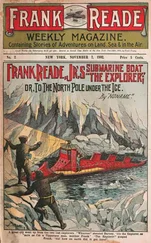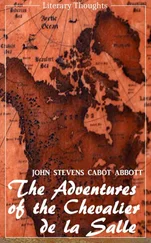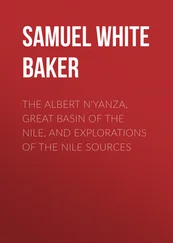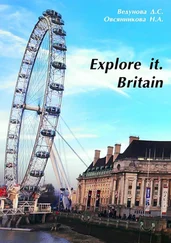Н. Овсянникова - Explore it. The USA
Здесь есть возможность читать онлайн «Н. Овсянникова - Explore it. The USA» — ознакомительный отрывок электронной книги совершенно бесплатно, а после прочтения отрывка купить полную версию. В некоторых случаях можно слушать аудио, скачать через торрент в формате fb2 и присутствует краткое содержание. ISBN: , Жанр: Языкознание, Путешествия и география, на английском языке. Описание произведения, (предисловие) а так же отзывы посетителей доступны на портале библиотеки ЛибКат.
- Название:Explore it. The USA
- Автор:
- Жанр:
- Год:неизвестен
- ISBN:9785449007407
- Рейтинг книги:4 / 5. Голосов: 1
-
Избранное:Добавить в избранное
- Отзывы:
-
Ваша оценка:
- 80
- 1
- 2
- 3
- 4
- 5
Explore it. The USA: краткое содержание, описание и аннотация
Предлагаем к чтению аннотацию, описание, краткое содержание или предисловие (зависит от того, что написал сам автор книги «Explore it. The USA»). Если вы не нашли необходимую информацию о книге — напишите в комментариях, мы постараемся отыскать её.
Explore it. The USA — читать онлайн ознакомительный отрывок
Ниже представлен текст книги, разбитый по страницам. Система сохранения места последней прочитанной страницы, позволяет с удобством читать онлайн бесплатно книгу «Explore it. The USA», без необходимости каждый раз заново искать на чём Вы остановились. Поставьте закладку, и сможете в любой момент перейти на страницу, на которой закончили чтение.
Интервал:
Закладка:
Explore it. The USA
Д. С. Ведунова
Н. А. Овсянникова
© Д. С. Ведунова, 2017
© Н. А. Овсянникова, 2017
ISBN 978-5-4490-0740-7
Created with Ridero smart publishing system
Geographical position and peculiarities of the country
The United States of America, often briefly referred to as the United States of America, the United States, or simply America, is a state in North America. The area is 9.5 million km² (4 thplace in the world). The population is 325 million people (2016, estimate, 3rd place in the world). The United States has a federal form of organization, administratively divided into 50 states and the federal district of Colombia; in their subordination there is also a number of island territories (Puerto Rico, the Virgin Islands, Guam and others).
The capital is the city of Washington. The United States borders the north with Canada, in the south – with Mexico, also have a maritime border with Russia. They are washed by the Pacific Ocean from the west, the Atlantic Ocean – from the east and the Arctic Ocean – from the north.
The United States of America was formed in 1776 with the unification of thirteen British colonies that declared their independence. The War of Independence lasted until 1783 and ended in the victory of the colonists. In 1787, the US Constitution was adopted, and in 1791 – the Bill of Rights, which significantly limited the powers of the government towards citizens. In the 1860s, the contradictions between the slave-owning southern and industrial northern states led to the beginning of the four-year Civil War. The consequence of the victory of the northern states was the widespread prohibition of slavery, as well as the restoration of the country after the split that arose when the southern states merged into the Confederation and declared their independence.
Location:
The main US territory (called continental states) is located on the North American continent and extends from the Atlantic Ocean in the east to the Pacific Ocean in the west. In the south, the United States borders Mexico, in the north – with Canada. In addition, the US includes 2 more states. The extreme north-west of the American continent is Alaska, also bordering Canada. In the Pacific Ocean is the state of Hawaii. The border with Russia passes through the Bering Strait. The United States also owns a number of islands in the Caribbean (for example, Puerto Rico) and the Pacific (American Samoa, Midway, Guam and others).
Subordinated territories
Under a particular US administration, there are (but are not included in) a number of island territories with different status. The Constitution of the United States fully operates on the territory of the uninhabited atoll of Palmyra. The remaining territories have their own basic legislation. The largest of these territories is Puerto Rico.
Relief
In the mainland, west of the Atlantic lowlands are the Appalachian mountains, behind which are the Central Plains (200—500 m above sea level), the Great Plains (600—1500 m) plateau. Almost the whole west is occupied by the Cordillera mountain system.
Most of the territory of the United States belongs to the North American platform. In the east it is framed by the Paleozoic Appalachian folded system, in the west by the Mesozoic-Cenozoic folded Cordillera system, in the south by the young plateau on the coast of the Gulf of Mexico, which passes northeast into the Atlantic flank of the same age. The foundation of the North American platform is exposed in the US territory in several small areas: Adirondack of the Canadian Shield (Middle Riphean rocks) in the states of Minnesota, Wisconsin and Michigan (rocks: granite gneisses over 3.5 billion years old, Archaean formation of greenstone belts and granites, Lower Proterozoic shelf deposits, quartzites, overlapping rocks of the Archean, Upper Proterozoic continental red clastic sediments, basalts and gabbros), in the Eastern Scalists mountains, in the states of Montana, Wyoming, Colorado, New Mexico, Arizona (north – Archean education, and to the south of Wyoming – Lower Proterozoic). The rest of the area is represented by acidic ground volcanics and granites. The platform cover within the continental United States has a Paleozoic age – from the very tops of the Cambrian or more often Ordovician to the lower Permian in the Peredapalach trough. Deposits of the Lower and Middle Paleozoic are predominantly shelf carbonates with subordinate packets of quartz sandstones and black mudstones («shales»). In the Michigan (Silurian) and Willstonian (Devonian) basins there are known evaporites (salts) and in the first of them – reefogenic limestones. Depositions of the Middle-Upper Carboniferous (Pennsylvanian system of American geologists) represent a paralyzed, cyclically constructed coal-bearing formation. It forms the central part of the Peredapalachsky trough, the basins (syneclise) of Michigan and Illinois (the Inner East coal-and-coal basin), Forest City and Celain (Inner Western Coal Basin), the intermediate elevation – the anteclise of Cincinnati and Ozark, and Bend in the south – the east – are composed from the surface of the Lower Paleozoic, and the wings are Silurian and Devonian. In the deep East Texas syneclise in the southwestern corner of the platform is a complete section of Permian sediments. The rocks of the Triassic and Jurassic (coastal-marine and continental) are known only in the west of the Great Plains, as well as in the large Willston syneclise. More often there are carbonate-terrigenous deposits of chalk – in a wide band from the Canadian border to the Gulf of Mexico. The Cenozoic deposits are of low power, the continental ones are limited, closer to the Rocky Mountains, along the foot of which the deflections of the Powder River, Denver and Reton are located. The southwestern corner of the platform is separated from its main part by the complex Wichita avlacogen, which extends to the west, in the northern part of the Colorado plateau.
The Rocky Mountains
The Rocky Mountains are the main mountain range in the Cordillera system of North America, in the west of the USA and Canada, between 60 and 32° N. w.
Rocky Mountains stretch for 4830 kilometers from north to south from the northern point in the province of British Columbia (Canada) to the state of New Mexico in the southwest of the United States. The width of the mountains reaches 700 kilometers. The Rocky Mountains are a natural watershed between the basins of the Pacific and Atlantic Oceans. In the Rocky Mountains, the rivers of Missouri, Colorado, Rio Grande, Snake, Arkansas and many others originate. Rocky Mountains were formed from 80 to 55 million years ago in the era of Laramie’s orogeny. Since then, under the influence of water and glaciers in the mountain range spectacular valleys and peaks were formed. At the end of the last ice age, people began to colonize the Rocky Mountains. After several expeditions, such as the journey of Alexander McKenzie or the expedition of Lewis and Clark, the Rockies began to settle; minerals and furs gave rise to the initial economic development of the mountains, despite the fact that the Rocky Mountains remained a sparsely populated area. Currently, most of the territory of the Rocky Mountains is protected by national parks and forest lands. Rocky Mountains – a popular place for tourists, especially for hiking, mountaineering, fishing, hunting, skiing, snowboarding and others.
The name «Rocky Mountains» was given by the Canadian pioneer of French origin Pierre Gauthier Varenne de la Verandry after he crossed the river Pierre Jaune (today it is Yellowstone – the river of yellow stone) on January 1, 1743. Alexander Mackenzie crossed the mountains in 1793 and named them «Stony Mountains». In the second half of the XIX century, the mountains were returned to the previous name.
Читать дальшеИнтервал:
Закладка:
Похожие книги на «Explore it. The USA»
Представляем Вашему вниманию похожие книги на «Explore it. The USA» списком для выбора. Мы отобрали схожую по названию и смыслу литературу в надежде предоставить читателям больше вариантов отыскать новые, интересные, ещё непрочитанные произведения.
Обсуждение, отзывы о книге «Explore it. The USA» и просто собственные мнения читателей. Оставьте ваши комментарии, напишите, что Вы думаете о произведении, его смысле или главных героях. Укажите что конкретно понравилось, а что нет, и почему Вы так считаете.












